
I think I first discovered Tracy Butler’s Lackadaisy back when I was watching Axe Cop go viral and trying to figure out who to thank. In my memory, I found the Lackadaisy twitter when she shared the link to Axe Cop and got me a ton of traffic. Butler’s work has from that day forth stuck out to me as how to do webcomics right. She has a fan following that adores her and her comic. She has managed to go full time making Lackadaisy, living off of her Patreon income. As a creator who has been trying to crack the Patron nut myself, I decided that, after my interview with Scurry creator Mac Smith, I would see if Butler would be willing to chat next. You might call these my cat and mouse interviews.
If you haven’t checked out Butler’s work, I highly recommend it. Even if you don’t have time to read more comics, her visuals aren’t just a treat, each page is a fancy meal. If you are a fan of the Milt Kahl noir inspired character design of Blacksad, Butler takes that mixed genre and gives it her own mischievous spin. And, much like the artwork in Scurry, each page proves how precious the subject matter is to the artist with her painstaking attention to detail. What Butler has in spades is style. She is not ripping someone off, she is not simply drawing well. She is designing. She has nailed down a gorgeous tribute to prohibition era decor while fitting it around her own style and take on a genre.
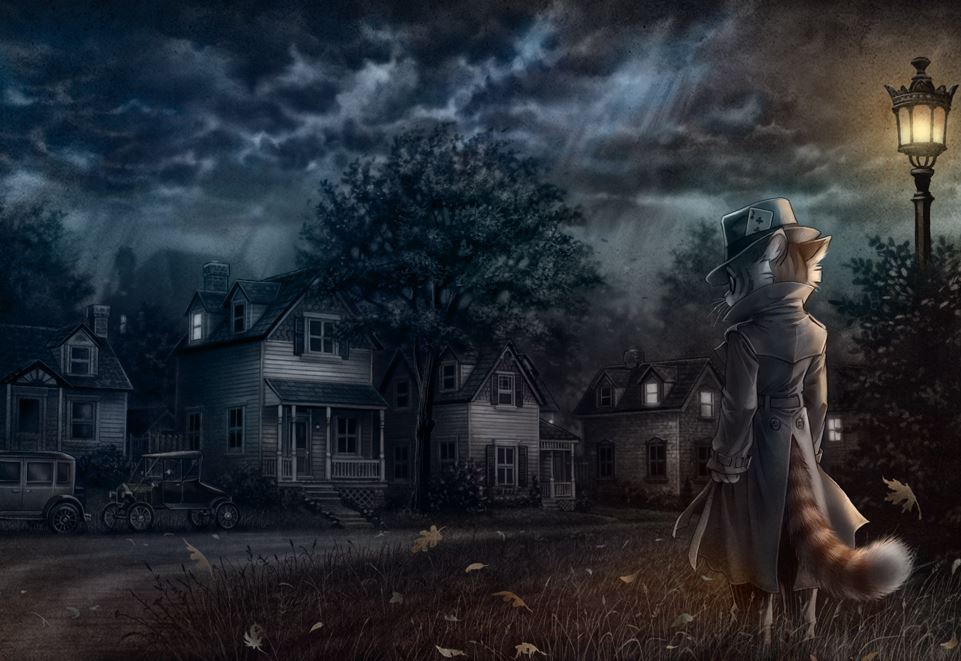
The conversation felt like it could go on forever. Even if nobody ever reads this, I had a blast talking to her and I hope we can do it again some time. We both had a lot to say. So, I decided to break our conversation up into two parts. I give you part one…
Axadaisy – The creators of Lackadaisy and Axe Cop interview each other
PART ONE
Ethan Nicolle: I will admit up front that I have seen a lot of your art, but I have not read many of your comics. I’m sure you experience the same phenomenon. The more comics you make, the less you have time to read. But I have seen your work and it is amazing. My aim is for this conversation to be less about either of our actual comics and more about the life of creating comics and trying to make a living of it.
One thing that really stands out to me is your style and consistency of design. Everything you make is instantly recognizable, which I think is really impressive. Did you plan it like that, or did it just sort of happen?
Tracy Butler: Well, thank you for the kind appraisal! It’s nice to hear my work is recognizable too. I spent an unhealthy amount of my childhood and teenage years consuming animated fare – Disney, Don Bluth, and Warner Bros. stuff. I’d watch it, then watch it again, then rewind and watch it in VHS slow motion, trying to discern the individual drawings comprising the animation so that I could try to imitate it. My reclusive notion of fun also included redrawing the canon of Calvin and Hobbes strips. The influences are probably pretty evident in my work. Everything I took in culminated into ‘the way that I draw’, which is more or less the style Lackadaisy is rendered in. As much as I’d like to say I planned it with great foresight, it’s really just what naturally happens when I put a pencil to paper.
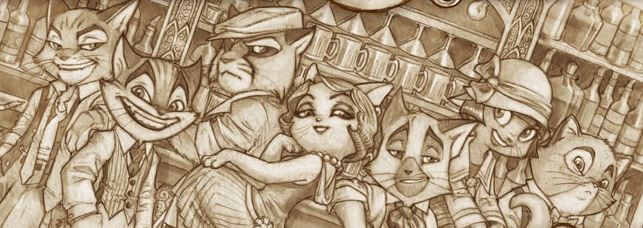
It’s when I need to draw something other than bug-eyed, mugging cats that I have to put a concerted effort into concocting a separate look for it. At my former day job where I worked as an illustrator and 3D game artist, I did a lot of character and creature designing in the high fantasy vein. Early on, I’d get a lot of mixed feedback from my colleagues – “Tracy, these kobolds are really cute, but the players are supposed to enjoy slaughtering them wantonly.” I had to work past some of my habits and find ways to be more versatile, lest our player base develop some sort of guilt complex.
Ethan Nicolle: Wait, when you say you redrew the Calvin and Hobbes canon, you don’t mean you literally redrew every strip? Your art has a discipline evident to it that this would not surprise me, but still! I can only say I spent time trying to ink trees like Watterson. Never really got the hang of it though.
Tracy Butler: I didn’t redraw every single strip, but I made it through most of the colored Sunday strips. My mother got pretty fed up with having to hang them on the fridge.
Anyway, that’s the evolutionary process of an artist in a nutshell I suppose; spend years going through phases in which you chase after the look of one idol or another until one day you realize all of the bits and pieces of style and technique you’ve purloined along the way have snowballed into something separate and yours.
Ethan Nicolle: My influences are all over the place too. As a young aspiring artist, part of me wanted to be the next Eastman and Laird, another part John Kricfalusi, and another part Jim Lee. As I’ve grown up, I am still figuring out who I want to be, and it’s definitely none of those guys. It’s whatever the heck I am. I have them and many others to thank for their influence, but if I became any of them I would not be happy. Even with the ups and downs of my own attempts at being free to make comics, I wouldn’t trade it for anything. But if you look at my various works, you will notice a mish mash of styles. As you mentioned in Bearmageddon, my humans are more influenced by artists like Doug TenNapel. My Bears are inspired by actual bears. In Axe Cop I went for a quasi-superhero mixed with old Dick Tracy or Superman comics, and in my first books, Chumble Spuzz, I was going as all-out cartoony as I could (though I did often draw the beasts, like my Satan-possessed-pig in great detail like I do my bears. I’m not sure why I do that. I think it’s my deep desire to make a clone of myself and ALSO be a concept artist because I love drawing creatures). Specifically, I think in Bearmageddon I wanted the reader to feel that the bears are not a joke when they show up. They are real. My characters are slackers, they are cartoons, they aren’t serious about life and the bears are here to let them know this is serious. Time to shape up, it’s the end of the world.
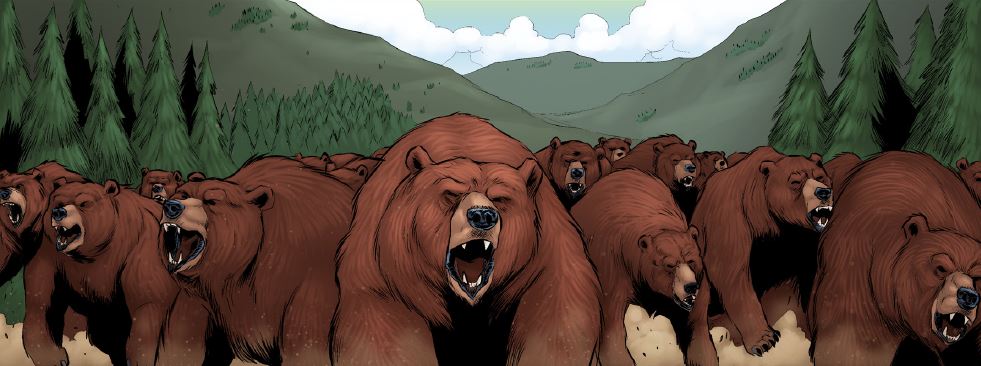
Tracy Butler: What’s it like working with a team of other artists on Bearmageddon? How do you manage to maintain such a specific and consistent style in that situation? (We’re not talking about the comics themselves, I know, but as an aside, I really like the juxtaposition of the grotesque, sort of terrifying sci-fi look much of the bear art has with the comparative levity in the character designs).
Ethan Nicolle: I have done all the pencils and inks on Bearmageddon. I have had two lead colorists along the way. I never saw myself doing a color comic, but when I started this one I decided to post something saying I’m looking for a colorist if they want to collaborate. I found a guy who lasted for quite a while, but I think life got in the way. That was frustrating, deciding if I should just post black and white when I didn’t get the colors back in time. Eventually I just did and I stopped getting colors. Then Kailey, who has worked on Axe Cop in the past sent me a sample page to show me she could imitate the last guy’s style on Bearmageddon, and she could! So she picked up where he left off. In general I avoid collaborating because I like to be in control of everything and not having to worry about someone else flaking or losing interest. But I love having a colored comic. I hate coloring, so I am very grateful to have someone who colors for me. I would never have the patience to do it myself. I started paying Kailey a page rate a while back when I got some steady work because I feel so sorry for her having to color every obnoxious detail I draw.
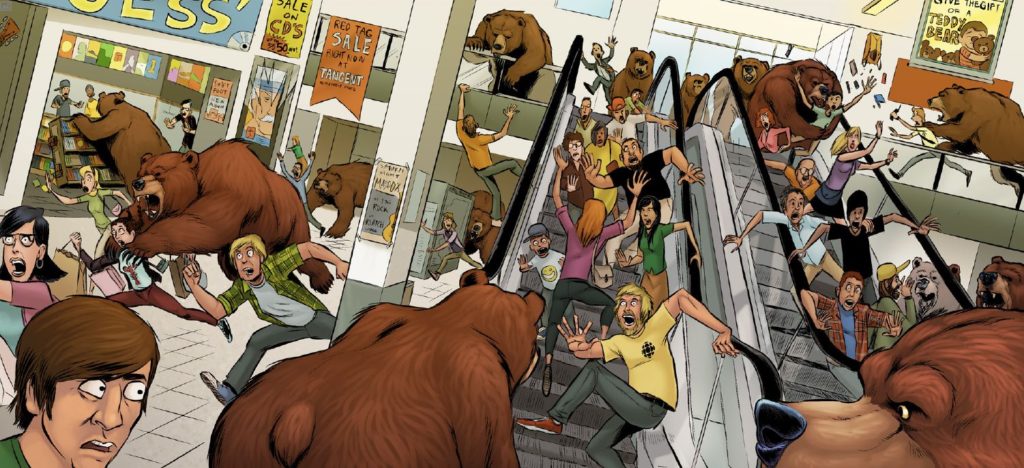
Tracy Butler: I spent the last several years at my former job in an art director role, so I do understand the struggle that it is to keep a team of artists on point and sticking to guidelines you’ve painstakingly laid out for them. Even when they’re showing up for a regular, salaried office job, it’s not easy. When you’re working with artists remotely on a project that’s probably one of many freelance gigs they’re juggling at once…yeah. “Herding cats” comes to mind.

I’ve often had readers suggest that I hire additional artists to facilitate faster updates with Lackadaisy, but I doubt they understand the array of complications that introduces to the process. I’m happy to continue working solo, even though it means losing readers who don’t have a particularly long attention span.
That said, though, I think full color was a good choice for Bearmageddon. It really looks great, and I’m sorry to hear that you have to pull funds from a different job to pay your colorist. Something of that caliber really ought to pay for its own production costs and then some. At least that’s how it would be if there were any justice in the world.
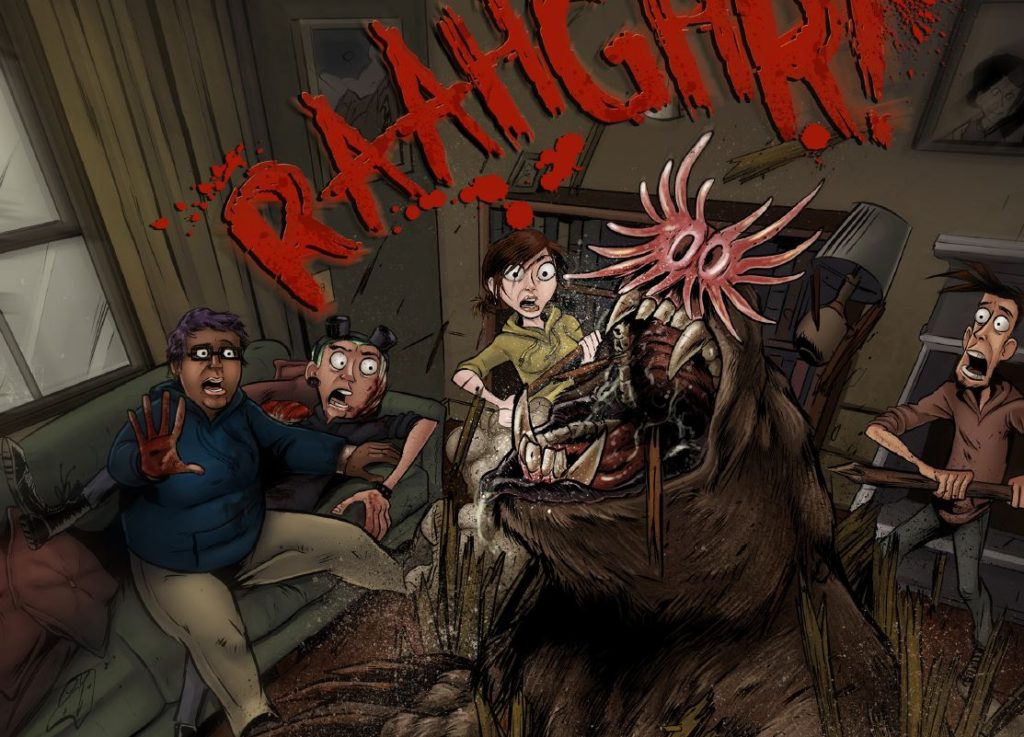
Ethan Nicolle: Speaking of money, one of the main things that made me want to chat with you is your Patreon success. I see a lot of excellent comics out there who don’t get a lot of Patreon support. It seems like a business model that throws a lot of people off if they are used to spending their money at the store, or on Amazon on a finished book, or even on Kickstarter for a future single item as opposed to investing in a person’s career. I’d like to know what your Patreon journey was like and what you learned along the way.
Tracy Butler: Patreon…well, that’s a big topic.
I wish I could say I knew why Lackadaisy has done pretty well there compared to comics that are better-looking and faster-updating. I was really quite surprised by the response when I launched. I spent a few years scrimping and saving enough money to survive on for about 12 months so that I could make that ‘going full-time’ leap and know that if/when things went financially awry, I’d at least have some time to try to build up the patronage or make contingency plans.
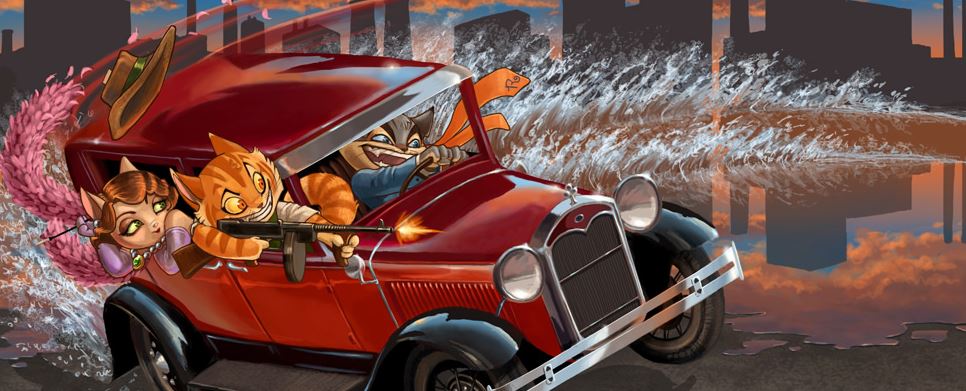
Well, then I made the leap, launched the Patreon, and for reasons largely unbeknownst to me, it vastly exceeded my expectations right off the bat. I still have these recurring inferiority complex-borne thoughts about it like, one day, suddenly my patrons will come to their senses, realize this comic isn’t worth it, depart and leave me struggling mightily to make a living on it like I expected I would be. I’m definitely not complaining that things turned out the way they did, but it makes for a strange sort of anxiety that I didn’t anticipate having.
Anyway, I’ve done a lot of thinking about what happened and why since I began supporting myself through Patreon in 2015. Here are some theories and thoughts about it (that may or may not have some tenuous connection to reality)…
…Two be continued in part two NEXT MONDAY
Go read Lackadaisy
Follow Tracy on Twitter
Support Lackadaisy on Patreon

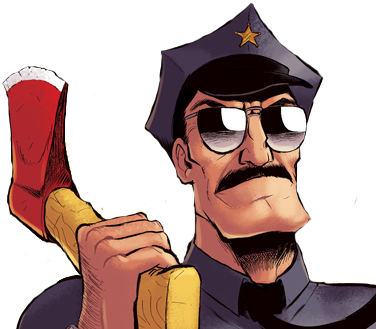

Aww man! I was so into this!
Alright, I’ll come back on Monday. . . 😉